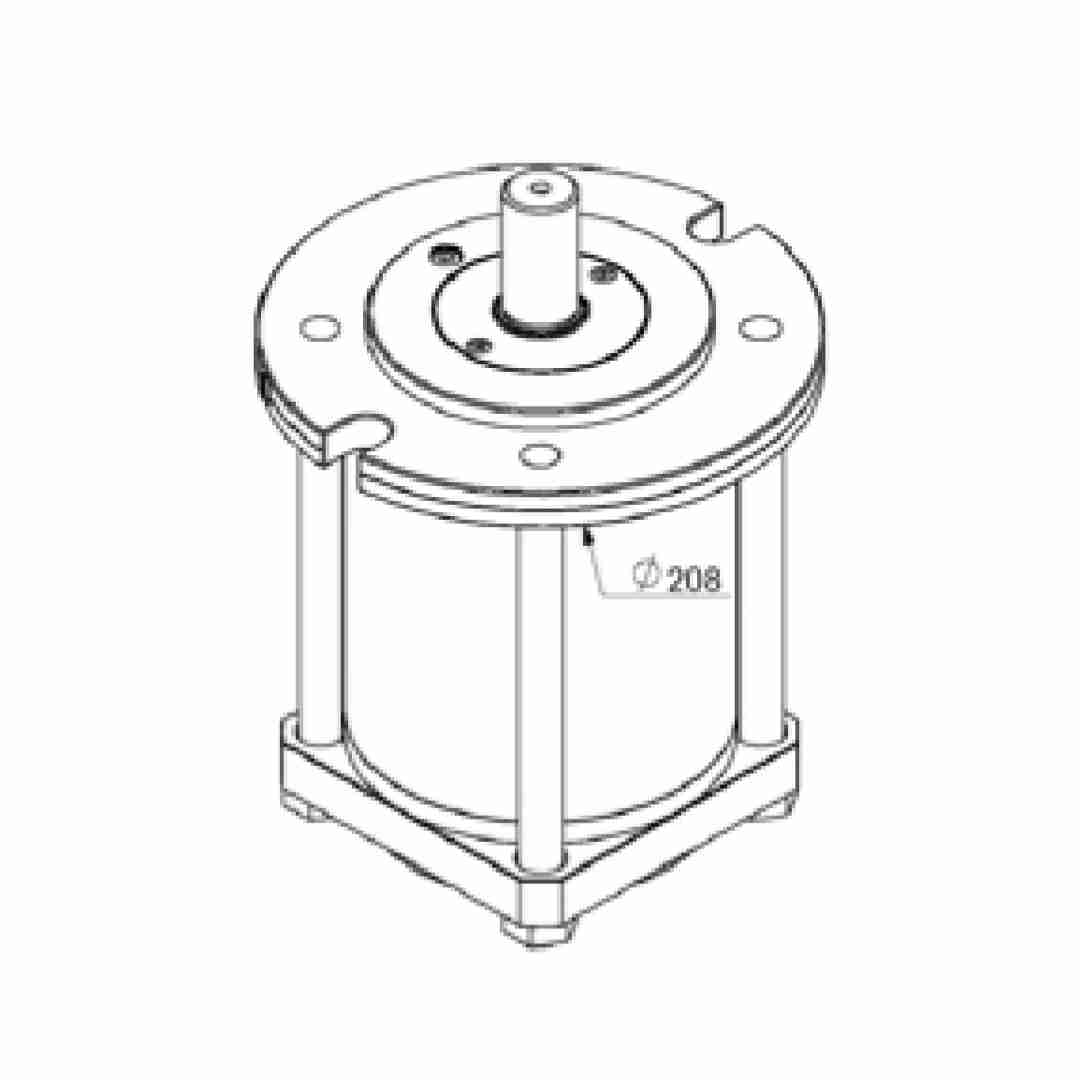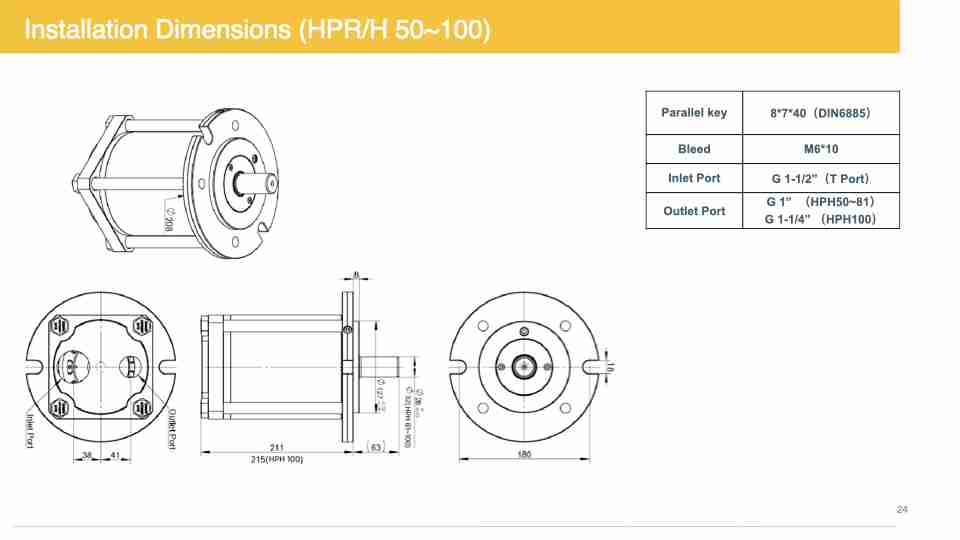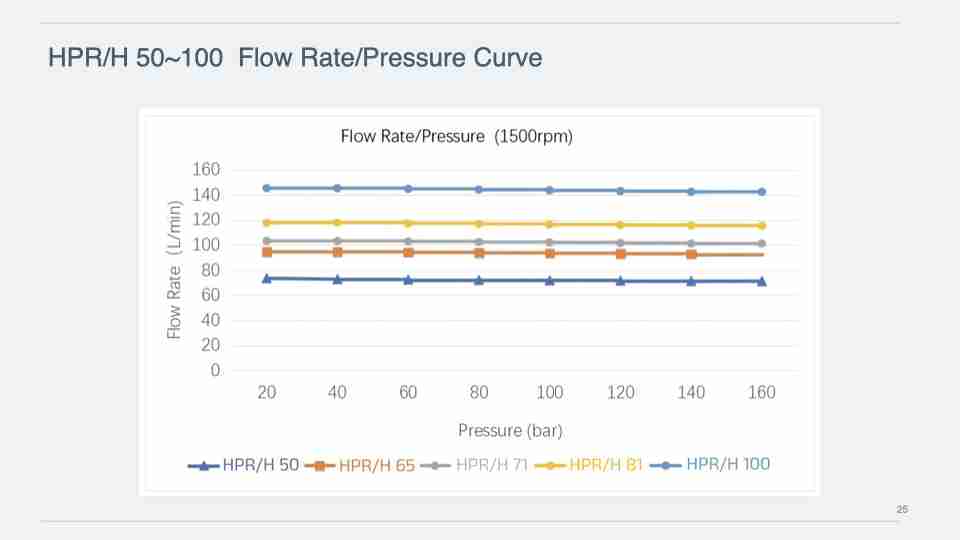Description
Design and Usage
The HPR/H 50~100 water mist pumps are designed with two ports and are primarily used in pump group systems. These pumps are not self-priming, meaning that the inlet pressure must always be positive. If this cannot be guaranteed, permanent damage to the pump may occur.
The simplest method to ensure correct operation is to disconnect the inlet pipe and measure the flow rate. When the water tank’s liquid level is at its lowest point, the supply flow should be at least 20% greater than the pump’s delivery flow. This ensures that the inlet pressure remains positive during operation.
Installation Recommendations
- Inlet Pressure: The pump must always maintain positive inlet pressure. Never install a filter between the pump and the water tank unless a pressure switch is included on the inlet pipe to ensure the pump inlet is not exposed to negative pressure.
- Electric Pump Set:
Use a standard bell housing and coupling for connecting the pump to the B5 motor flange. It is essential that the pump is not subjected to axial or radial loads on the output shaft. Gear couplings should be used whenever possible to minimize stresses and ensure the reliability of the system.
Temperature Range
The HPR/H 50~100 pumps are designed to operate effectively between 2℃ and 50℃.
- For temperatures below freezing, environmentally friendly antifreeze is required to protect the pump.
- Operation at temperatures above 50℃ is possible but will affect the volumetric efficiency of the pump. It is important to specify the maximum operating temperature when ordering the pump for high-temperature environments.
Filtration
All water entering the pump must be pre-filtered with a nominal rating of 10 microns (absolute rating of 25 microns).
- For closed-loop systems, backflow filtration can be used.
- High-pressure filtration is also an option but may be a more expensive choice.
Fluid Compatibility
The standard HPR/H 50~100 pump design is suitable for drinking water and industrial water, such as distilled water, reverse osmosis water, or demineralized water.
- Depending on the operating environment, changes to sealing materials or pump construction may be required.
- The standard construction can also handle seawater; however, due to the corrosive nature of seawater, extended use may require higher-quality materials to ensure long-term reliability.
| Pumps Model | 50 | 65 | 71 | 81 | 100 |
| Displacement (cc/rev) | 50 | 65 | 71 | 81 | 100 |
| Housing Material | ASTM 304 / ASTM 316L | ASTM 304 / ASTM 316L | ASTM 304 / ASTM 316L | ASTM 304 / ASTM 316L | ASTM 304 / ASTM 316L |
| Min. Outlet Pressure(barg) | 30 | 30 | 30 | 30 | 30 |
| Max. Outlet Pressure(barg) | 160 | 160 | 160 | 160 | 160 |
| Inlet Pressure,Continuous(barg) | 0.1-5 | 0.1-5 | 0.1-5 | 0.1-5 | 0.1-5 |
| Min. Speed,Continuous (rpm) | 700 | 700 | 700 | 700 | 700 |
| Max. Speed (rpm) | 2000 | 1800 | 1800 | 1800 | 1500 |
| Flow Rate (L/min) (16Mpa,700 rpm) | 32.6 | 42.3 | 46.2 | 52.7 | 65.1 |
| Flow Rate (L/min) (16Mpa,1000 rpm) | 46.5 | 60.5 | 66.0 | 75.3 | 93.0 |
| Flow Rate (L/min) (16Mpa,1500 rpm) | 71.3 | 92.6 | 101.2 | 115.4 | 142.5 |
| Flow Rate (L/min) (16Mpa,2000 rpm) | 95.0 | - | - | - | - |
| Flow Rate (L/min) (16Mpa,3000 rpm) | - | - | - | - | - |
| Power Consumption (KW) (16Mpa,1500 rpm) | 21.9 | 28.5 | 31.1 | 35.5 | 43.8 |
| Min. Media Temperature (°C) | 2 | 2 | 2 | 2 | 2 |
| Max. Media Temperature (°C) | 50 | 50 | 50 | 50 | 50 |
| Sound Pressure Level (dB) * | 80 | 80 | 80 | 80 | 80 |
| Weight (kg) | 24.8 | 24.8 | 24.8 | 24.8 | 24.8 |
| Integrated Flush Valve | NO | NO | NO | NO |



